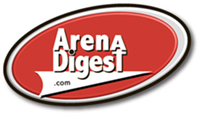 With COVID-19 pandemic rates continuing to rise, college basketball and hockey programs are looking at a 2020-2021 NCAA season with no fans in the stands, in another financial blow to beleaguered budgets.
With COVID-19 pandemic rates continuing to rise, college basketball and hockey programs are looking at a 2020-2021 NCAA season with no fans in the stands, in another financial blow to beleaguered budgets.
With the NCAA Division I college basketball season set to begin Nov. 25, athletic departments are under the gun to make decisions about how they handle crowds for athletic competitions. The Ivy League announced that winter sports would be canceled in their entirety, but other conferences are moving ahead with competitions for the 2020-2021 NCAA season.
Without fans–at least at the beginning of the season. Typical is the University of Minnesota, which announced in a letter to season-ticket holders that it would hew to state guidelines limiting indoor events to 250 attendees.
“Based on recommendations from local health officials and guidelines in place on the state and local levels, there will be a drastic reduction in the number of spectators permitted to attend Gopher sporting events,” per the email to fans. “Current guidelines from the Minnesota Department of Health specify that venues must reduce occupant capacity to no more than 250 (indoor venues) patrons. With this reduction, we anticipate few or no spectators at home basketball games. Our staff is committed to working closely with government officials to monitor guidelines and adjust policies as needed. In addition, it is possible these ticketing procedures will be revisited later as the season progresses, should guidelines change.”
A similar limitation was announced by Boise State, which told season-ticket holders of restrictions at ExtraMile Arena. While the school is offering refunds, it is also asking fans to consider donating their season-ticket money and other contributions to the school to address financial shortfall caused by the decision.
This is not new, as other schools have made adjustments to their season operations based on the assumption that fans will not be present for competition. In a cost-cutting move, the University of Wisconsin men’s hockey team will play its home games at the smaller LaBahn Arena and not at its usual home, the Kohl Center. And you may see adjustments to schedules to cut back on travel.
The financial hit to schools not allowing fans into the stands is real: yes, the Big Ten Conference and other major conferences will still receive television broadcast payments, in an improvement over the shutdown of play last March. But game-day revenues are still a major part of athletic-department budgets, as football and basketball are the two major generators of revenue and subsidize non-revenue sports.
Of course, we are seeing schools like the University of Minnesota selling cutouts to raise revenue.

